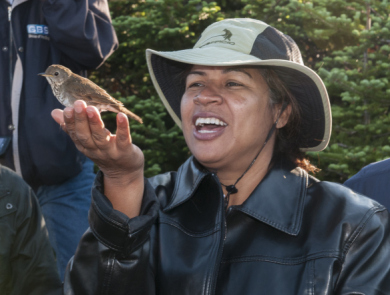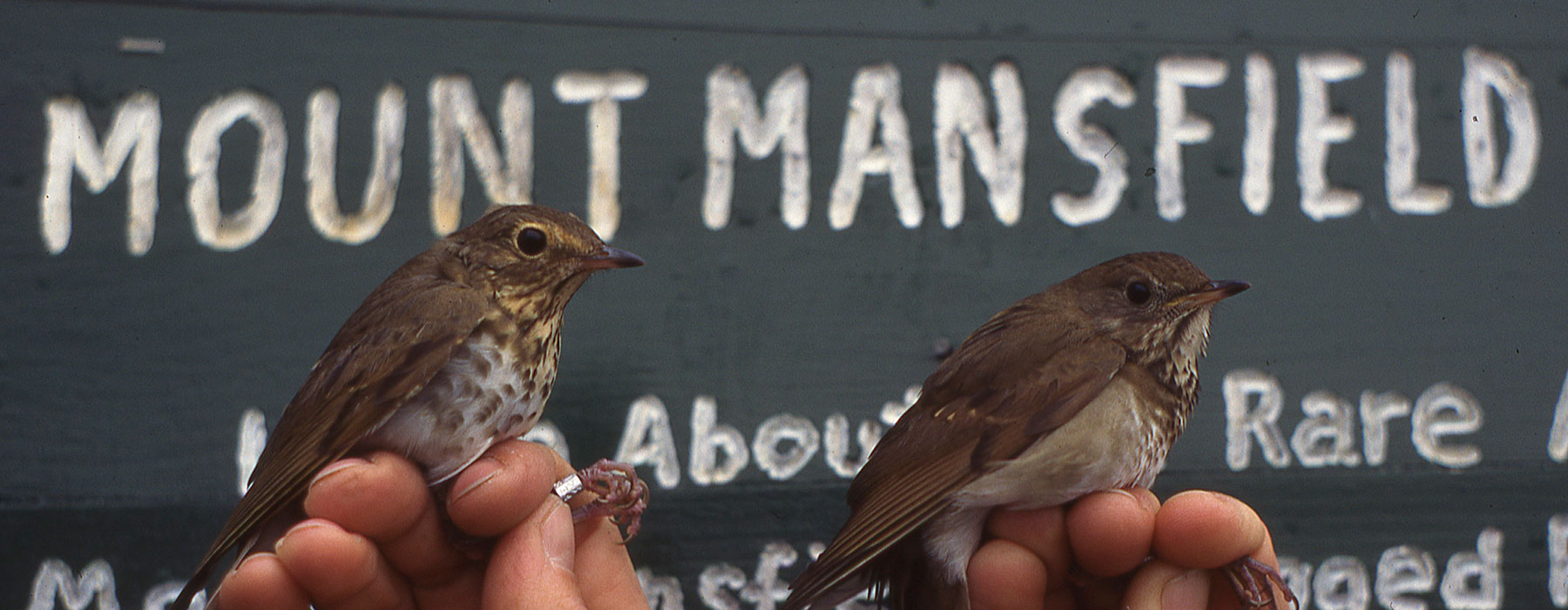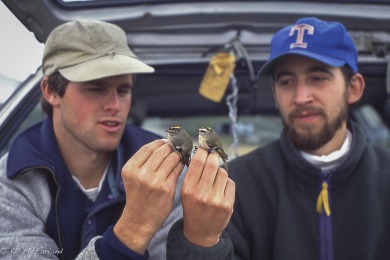In June 1992, on the fog shrouded ridgeline of Vermont's highest peak, Chris Rimmer captured, banded, and released a small songbird. Over two decades later and nearly 11,000 birds banded, our data are helping to shed light on population changes, demographics, and avian health.
Using special nets hung between two bamboo ski racing poles along trails, our biologist rise before the sun at 3:30 AM to ready for the dawn chorus. Work won't end until the sun has set that night. The birds are harmlessly captured in the nearly invisible nets. A tiny aluminium bracelet with a unique set of nine digits, like an avian social security number, is placed on each bird's right leg. They are measured, weighed, and a tiny droplet of blood and a single feather are taken for chemical analysis. With all the data stored safely with the scientists, the bird is released back to the wild.
Fall Migration
Of the numerous demands that migrant birds face during their annual migrations, selection of enroute stopover habitat is paramount. Despite heightened interest in stopover ecology and its conservation implications, few researchers have focused on high elevation forested habitats of North America. In the northeastern United States, montane forests occupy a prominent, although geographically limited, space in the regional landscape.Their maximum extent is only ~0.4% of all land area above 3,000 ft elevation in northern New England and New York, and they occur as habitat ‘‘islands’’ of varying size and distance from one another.
After witnessing several large migratory stopovers in early September, we initiated a migratory bird banding station on the ridgeline of Mt. Mansfield. For three fall migrations (1995-1997) from August until early October snowfall, we used up to 20 mist nets to capture and band songbirds to document the extent of migratory stopover. Learn more >>
Breeding Season

Maria Altagracia Camilo, director of Foundacion Loma Quita Espuela in the Dominican Republic, recently visited our banding station on Mt. Mansfield and got to release a Bicknell’s Thrush after it was banded. These birds spend the winter in the hills above her office protected by the Foundacion.
Our scientists, with the help of student interns and volunteers, have operated up to 30 mist nets along the ridgeline of Mt. Mansfield each summer since 1992. This long-term monitoring allows our scientists to understand changes—both natural and human-created—to guide conservation action. Every year, we band over 5,000 birds to help us understand changes in the breeding bird community with weather, climate, forest changes, and more thanks to the Vermont Monitoring Cooperative.


